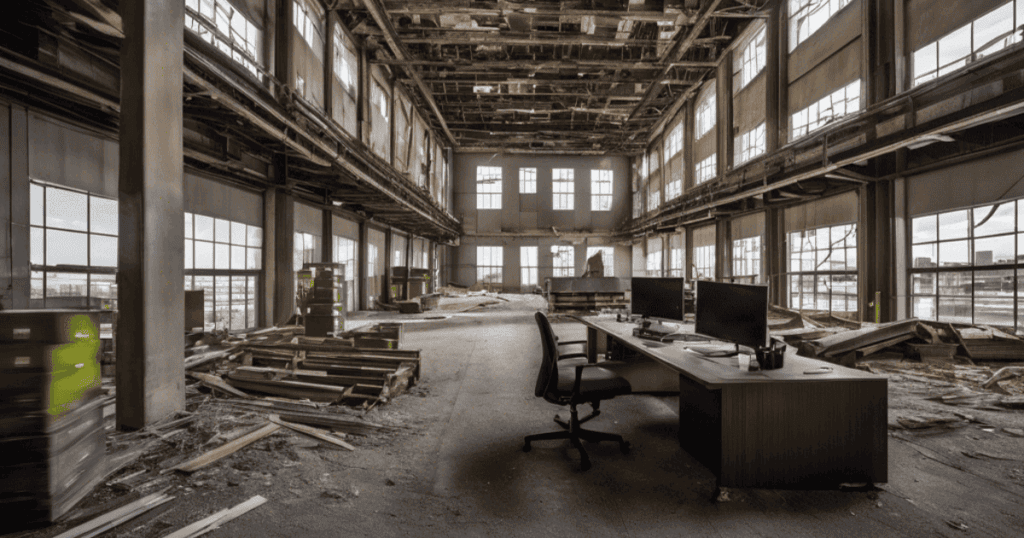The commercial real estate landscape is experiencing a significant shift, moving away from the traditional dominance of office spaces to a growing demand for industrial and distribution facilities. A notable example of this change is taking place in Santa Ana, where an operational office complex is being dismantled to pave the way for a distribution center akin to those used by Amazon.
The Strategic Shift to Warehouses
Kearny Real Estate Co., the property’s owner, has opted to forsake the conventional office model in favor of capitalizing on the burgeoning market for warehouses and logistics. This move, though seemingly against the grain, is in direct response to the evolving commercial real estate market dynamics, heavily influenced by the COVID-19 pandemic.

The Impact of the Pandemic
The pandemic has led to a nationwide reduction in office staff and a surge in the demand for home delivery services. Consequently, there’s been a notable decrease in the demand for office spaces. In response, several office property owners are reevaluating the sustainability of their investments, with some transitioning their properties to alternative uses like residential apartments or warehouses.
The Rise of Last-Mile Facilities
The decision to replace Kearny’s office complex with a 163,000-square-foot warehouse and distribution center stems from the weakening office rental market and the booming demand for last-mile logistics facilities. These facilities, crucial for the final delivery step, have significantly increased in value, offering lucrative rent growth opportunities for their owners.
A Nationwide Trend
This trend of transitioning from office to industrial use is not exclusive to Santa Ana but is evident across various U.S. markets, including Orange County. The scarcity of available land for new distribution centers has heightened the value of redeveloping older office buildings. “There’s real pressure to redevelop older office buildings,” notes Michael Soto, a research director at Savills, a real estate brokerage firm.
The Incentive to Redevelop
The strategic location of Kearny’s property in an industrial district negated the need for a rezoning process, making the transition to a distribution center straightforward. This, coupled with the rising demand for last-mile logistics facilities, made the conversion a logical decision.
The Changing Landscape
In 2018, the scenario was markedly different for office landlords. When Kearny purchased the office campus for nearly $35 million, the property was almost fully leased. Despite the impending departure of a significant tenant, the company was optimistic about quickly filling the vacancy at higher rental rates. However, the pandemic dramatically altered the market dynamics. By early 2022, with an occupancy rate of around 60% and a declining office rental market, Kearny began contemplating alternative uses for the property. Eventually, the company decided to demolish the building, originally constructed in 1982, to develop a modern warehouse and distribution complex.
The Evolving Commercial Real Estate Landscape
The transformation witnessed at Kearny’s property in Santa Ana is indicative of a broader trend likely to persist, especially in densely populated suburban areas like Orange County, where land is a premium commodity and the demand for industrial and logistics facilities remains robust. “Especially in dense suburban markets like Orange County where land is expensive, we are going to see more of this,” predicts Soto.
As the commercial real estate landscape continues to evolve, the traditional dominance of office spaces is diminishing in favor of industrial and logistics facilities. This shift reflects the changing preferences and needs of businesses and consumers, promising significant implications for the future of commercial real estate development and investment.

